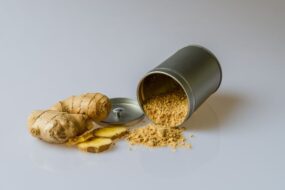
Achieving and maintaining a healthy body weight can be daunting in a world characterized by busy schedules, readily available fast food, and ever-increasing portion sizes. Amidst these challenges, meal replacement shakes have emerged as a convenient tool in the struggle to lose weight.
But how does one navigate through the diverse world of meal replacement shakes to achieve weight loss? This comprehensive guide aims to provide the necessary insight into using the best meal replacement shakes for weight loss, understanding their benefits, identifying the best options, and incorporating them effectively into your weight loss journey.
Meal replacement shakes have several benefits: convenience, portion control, and nutrient balance. However, misuse or over-reliance on these shakes can also pose potential risks. In this guide, we will explore both the advantages best meal replacement and the pitfalls to give you a comprehensive understanding of how to use meal replacement shakes for weight loss safely and effectively.
Table of Contents (click to expand)
What are Meal Replacement Shakes?
Meal replacement shakes are processed food products that substitute for a whole meal. They come in either ready-to-drink forms or powders that you can mix with water, cow’s milk, or a dairy substitute.
These shakes typically contain a balance of macronutrients – proteins, carbohydrates, and fats – and are fortified with a wide range of essential vitamins and minerals. Some high-protein meal replacement shakes also contain dietary fiber for added satiety.
A good meal replacement shake provides a comprehensive nutrient profile similar to a balanced, healthy meal. They are popular for weight loss strategies because they offer a convenient way to control calorie intake while ensuring essential nutrient needs are met.
Nutritional Benefits of Meal Replacement Shakes
Meal replacement shakes have the primary advantage of balancing essential nutrients in a controlled number of calories. Each shake is designed to provide a blend of protein, carbohydrates, and fats, mirroring the nutrient balance of a healthy meal.
Protein is an essential component of meal replacement shakes, as it aids in maintaining muscle mass during weight loss and keeps you feeling full for longer. Carbohydrates, preferably complex carbs, provide the necessary energy, while a moderate amount of healthy fats helps with satiety and absorption of fat-soluble vitamins.
Additionally, most meal replacement shakes are fortified with essential vitamins and minerals, ensuring you’re not missing out on these critical nutrients while cutting down on calories. They’re typically low in added sugars and saturated fat, which aligns with the dietary guidelines for a healthy eating pattern.
Different Types of Meal Replacement Shakes
Various meal replacement shakes are on the market, each catering to different dietary needs and preferences. Some shakes prioritize high protein content for those seeking to maintain muscle mass and increase satiety.
Other shakes may have a low glycemic index, making them suitable for individuals with diabetes or those looking to manage their blood pressure or sugar levels. Specific shakes are fortified with additional nutrients like Omega-3 fatty acids or probiotics for added health benefits.
How Meal Replacement Shakes Work for Weight Loss
The basic principle of weight loss is creating a calorie deficit, meaning you consume fewer calories than you burn. Meal replacement shakes contribute to this principle by providing a nutrient-packed meal with fewer calories than a typical whole-food meal.
Replacing one or two meals daily with these shakes can significantly reduce your overall calorie intake, leading to weight loss. Moreover, because these shakes are designed to be nutritionally complete, they help curb cravings that might arise from nutrient deficiencies, helping you stick to your weight loss plan.
Factors to Consider When Choosing a Meal Replacement Shake
Choosing the suitable meal replacement shake for your weight loss journey is crucial. Several factors come into play, not all meal replacements together, including your nutritional needs, taste preferences, dietary restrictions, budget, and weight loss goals.
Regarding nutritional content, a good meal replacement shake should contain enough protein to help maintain muscle mass and manage hunger. It should be low in added sugars and saturated fats, contain good fiber, and be fortified with essential vitamins and minerals.
Review of Popular Meal Replacement Shake Brands
Various meal replacement shake brands are on the market, each offering different nutritional profiles and benefits. Some popular meal replacement diet brands emphasize high protein content, suitable for those engaging in regular physical activity or strength training. Others might prioritize organic or natural ingredients, avoiding artificial flavors, colorings, and preservatives.
When selecting a brand, it’s important to research, read reviews, and perhaps try a few different ones to see which you prefer in terms of taste and how they make you feel.
How to Read Nutrition Labels on Meal Replacement Shakes
Understanding how to read nutrition labels is crucial for choosing the right meal replacement shake. Start by looking at the serving size, as all the other information on the label pertains to this amount. Look at the total calories to ensure they fit your daily calorie allowance.
Next, look at the macronutrients – proteins, fats, and carbohydrates. Consider both the amounts and the types of each present. For instance, look for shakes with high protein, low to moderate healthy fats, and preferably complex carbohydrates.
Incorporating Meal Replacement Shakes into Your Diet
Meal Replacement Shake Frequency
The number of liquid meal replacements or replacement shakes you should consume daily depends on your weight loss goals and how many calories you need. Replacing one meal – usually breakfast or lunch – with a shake may be sufficient for some.
Others might replace two meals. However, remember that having at least one balanced, solid meal each day is essential.
Replacing Meals with Meal Replacement Shakes
Choosing which meal to replace with a shake depends on your preference and lifestyle. Some people find it convenient to eat breakfast to replace breakfast, as mornings can be rushed.
Others might choose lunch if they’re often out of the house or at work. The idea is to choose a meal you’re most likely to skip or choose unhealthy options.
Combining Meal Replacement Shakes with Healthy Meals and Snacks
While meal replacement shakes can be a full meal, they should not replace all your meals. Eating at least one balanced, solid meal and having healthy snacks throughout the day is essential.
This ensures that you’re not only getting a variety of nutrients from different food sources, but it also helps keep your metabolism active and prevents extreme hunger and subsequent overeating.
Making the Most Out of Your Meal Replacement Shakes
Tips for Maximizing Weight Loss Results
Meal replacement shakes can be an effective weight loss strategy when combined with other healthy diet and lifestyle behaviors.
Include regular physical activity in your routine, aiming for at least 150 minutes of moderate-intensity or 75 minutes of high-intensity exercise per week.
Stay hydrated and try to eat mindfully, paying attention to your hunger and satiety cues. Sleep also plays a crucial role in weight loss. Aim for 7-9 hours of quality sleep per night.
Preparing Meal Replacement Shakes Correctly
Preparing meal replacement shakes is pretty straightforward. For ready-to-drink protein shakes above, you need to chill them in the fridge, and they’re ready to consume. If you’re using a powder, you’ll need to mix it with a liquid.
While you can use water, mixing the powder with cow’s milk or plant-based milk can provide additional nutrients and make the shake more satisfying.
Avoid adding extra calories by limiting sweeteners and high-calorie additives. Instead, add a handful of spinach or a scoop of unsweetened cocoa powder to increase the nutrient content without adding many calories.
How to Deal with Hunger and Cravings
It’s common to feel hungry when you start replacing meals with shakes. After all, your body is used to receiving more calories.
It’s essential to listen to your body and respond appropriately. If you’re feeling hungry, you might need to adjust your calorie intake, add an extra snack, or increase your fluid intake.
When it comes to cravings, these can often be signs of nutrient deficiencies or simply a response to restriction. Try to identify if there’s a pattern to your cravings. Are they related to specific situations, times of the day, or emotions? Once you’ve identified the patterns, you can devise strategies to manage them.
Staying on Track with Your Weight Loss Goals
Setting Realistic Weight Loss Goals
Weight loss should be a gradual process. Setting realistic and achievable weight loss goals can motivate you and increase your chances of long-term success.
A safe weight loss rate is generally considered 1-2 pounds per week. This requires a daily calorie deficit of about 500-1000 calories.
Tracking Progress and Making Adjustments
Tracking your progress is crucial in your weight loss journey. This doesn’t just mean stepping on the scale, as weight can fluctuate based on various factors. Instead, consider tracking changes in body measurements, how your clothes fit, and improvements in physical fitness and energy levels.
Remember, weight loss plateaus are normal and can occur even when sticking to your plan. If you’ve hit a plateau, it might be time to reassess your strategies and adjust.
Importance of Exercise and Physical Activity
Exercise and physical activity are important parts of a weight loss journey. They help burn calories, improve heart health, build muscle mass, enhance mood, and boost energy levels.
Aim for a mix of cardio activities like walking, running, or cycling and strength-training exercises like weight lifting or yoga.
Potential Risks and Side Effects
Common Side Effects of Using Meal Replacement Shakes
While meal replacement shakes can offer a convenient solution for weight loss, they can also cause some side effects, especially when starting. These may include headaches, nausea, constipation, and feeling hungry or unsatisfied after consuming a shake.
These side effects often subside as your body adjusts to the new diet. Drinking plenty of water and gradually increasing the frequency of shakes can help mitigate these effects.
Health Risks Associated with Meal Replacement Shakes
Over-reliance on meal replacement shakes can lead to a lack of dietary variety, which may result in nutrient deficiencies.
Additionally, some meal replacement shakes may contain artificial sweeteners and additives, which can have adverse health effects when consumed in excess. If you’re considering using meal replacement shakes for a prolonged period, it’s best to discuss this with a healthcare professional.
Warning Signs to Watch Out For
While most people can use meal replacement shakes without any major issues, there are some warning signs to watch out for. If you experience persistent digestive issues, excessive fatigue, hair loss, or mood changes, it’s important to consult a healthcare professional. These could be signs of nutrient deficiencies or other health issues.
Common Questions About Meal Replacement Shakes
The FAQ section addresses common queries related to meal replacement shakes, from their safety and potential health effects to their appropriate usage for optimal results.
Is a Meal Replacement Shake a Good Way to Lose Weight?
When used correctly, a meal replacement shake can be a good tool for weight loss. Meal replacement shakes can help control calorie intake, provide essential nutrients, and offer a convenient option for those with busy schedules.
They can also simplify the process of calorie counting, which is a critical component of many other weight management and loss strategies. However, it’s important to remember that meal replacement shakes are not a magic solution.
For sustainable weight loss, they should be used as part of a balanced diet and healthy lifestyle that includes regular physical activity, adequate sleep, and stress management.
How Many Times a Day Should You Drink a Meal Replacement Shake?
The number of meal replacement shakes you should consume daily depends on various factors, including your calorie needs, weight loss goals, and lifestyle. Some people might replace one meal daily, often breakfast or lunch, while others might replace two.
However, it’s generally recommended to have at least one solid food or meal replacement drinks per day to ensure you’re getting a variety of nutrients and maintaining a connection with the experience of preparing and eating whole foods.
Do You Eat Anything with a Meal Replacement Shake?
Whether or not you eat anything with a meal replacement shake depends on your individual calorie needs and the specific shake. Some meal replacement shakes are designed to be a complete meal and provide all the nutrients you need, so you wouldn’t necessarily need to eat anything with them.
However, if you’re still hungry after consuming a meal replacement shake diet, you might pair it with a small, nutrient-dense snack, such as a piece of fruit or a handful of nuts. It’s also essential to continue consuming whole foods for at least one meal daily to ensure dietary variety and nutrient adequacy.
What is the Best Time to Drink a Meal Replacement Shake?
The best time to drink a meal replacement shake depends on your preference and lifestyle. Some people find it most convenient to consume a shake for breakfast, as it can be prepared quickly and finished on the go, making it a good alternative for those who skip breakfast or eat fast food.
Others might prefer a shake for lunch or dinner, particularly if they struggle to prepare healthy meals during the day. Remember, the key is to replace a meal where you’re most likely to make less healthy choices or skip entirely.
Addressing Misconceptions About Meal Replacement Shakes
Despite their popularity and widespread use, many misconceptions exist about meal replacement shakes. Below are a few common ones.
Meal Replacement Shakes Are a Magic Solution for Weight Loss
While meal replacement shakes can help control calorie intake and provide essential nutrients, they are not a magic solution for weight loss. Weight loss involves creating a consistent calorie deficit, which can be achieved through dietary changes, regular physical activity, and other lifestyle modifications. Meal replacement shakes can be a part of this approach, but they are not a standalone solution to losing weight alone.
Meal Replacement Shakes Mean You Don’t Have to Exercise
Even though meal replacement shakes can help you lose weight by reducing your calorie intake, they don’t negate the need for regular physical activity. Exercise is a crucial component of a healthy lifestyle and can help accelerate weight loss, improve physical fitness, reduce the risk of chronic diseases, and boost mental health.
All Meal Replacement Shakes Are Created Equal
Many meal replacement shakes are on the market, and not everyone is equal. Some meal replacement products are high in added sugars and artificial ingredients, while others provide a balanced blend of protein, fiber, healthy fats, and essential vitamins and minerals. Reading nutrition labels carefully and choosing a product that aligns with your dietary needs and weight loss goals is critical.
Meal Replacement Shakes Will Make You Feel Constantly Hungry
While some people may feel hungry when replacing meals with shakes, this isn’t usually a long-term issue. Many meal replacement shakes are designed to be high in protein and fiber, which can help you feel full and satisfied. If you’re feeling hungry after a shake, you may need a higher-calorie shake, or you could try pairing your shake with a healthy snack.
Meal Replacement Shakes are Only for Weight Loss
While many people use these meal replacements and replacement shakes for weight loss, they can also be used for other purposes, such as weight maintenance or weight gain, and to support busy lifestyles or specific nutritional needs. For example, athletes or those with high energy needs might use meal replacement shakes as a convenient way to increase their calorie and protein intake.
Conclusion
Embarking on a weight loss journey is a significant step toward achieving a healthier and potentially longer life. Meal replacement shakes can be an effective tool in this journey, providing a balance of essential nutrients in a convenient, calorie-controlled format. However, it’s important to use them correctly, understanding their benefits and limitations.
Remember, successful weight loss involves a combination of balanced nutrition, regular physical activity, adequate sleep, and stress management. While meal replacement shakes can help control calorie intake, they should be part of a comprehensive weight loss strategy and not a solution.
Finally, keep in mind that everyone’s fat loss journey is unique. What works for one person may not work for another. Listen to your body, adjust as needed, and seek support when needed. And above all, be patient with yourself – sustainable weight loss takes time, but the benefits are worth the effort.





































